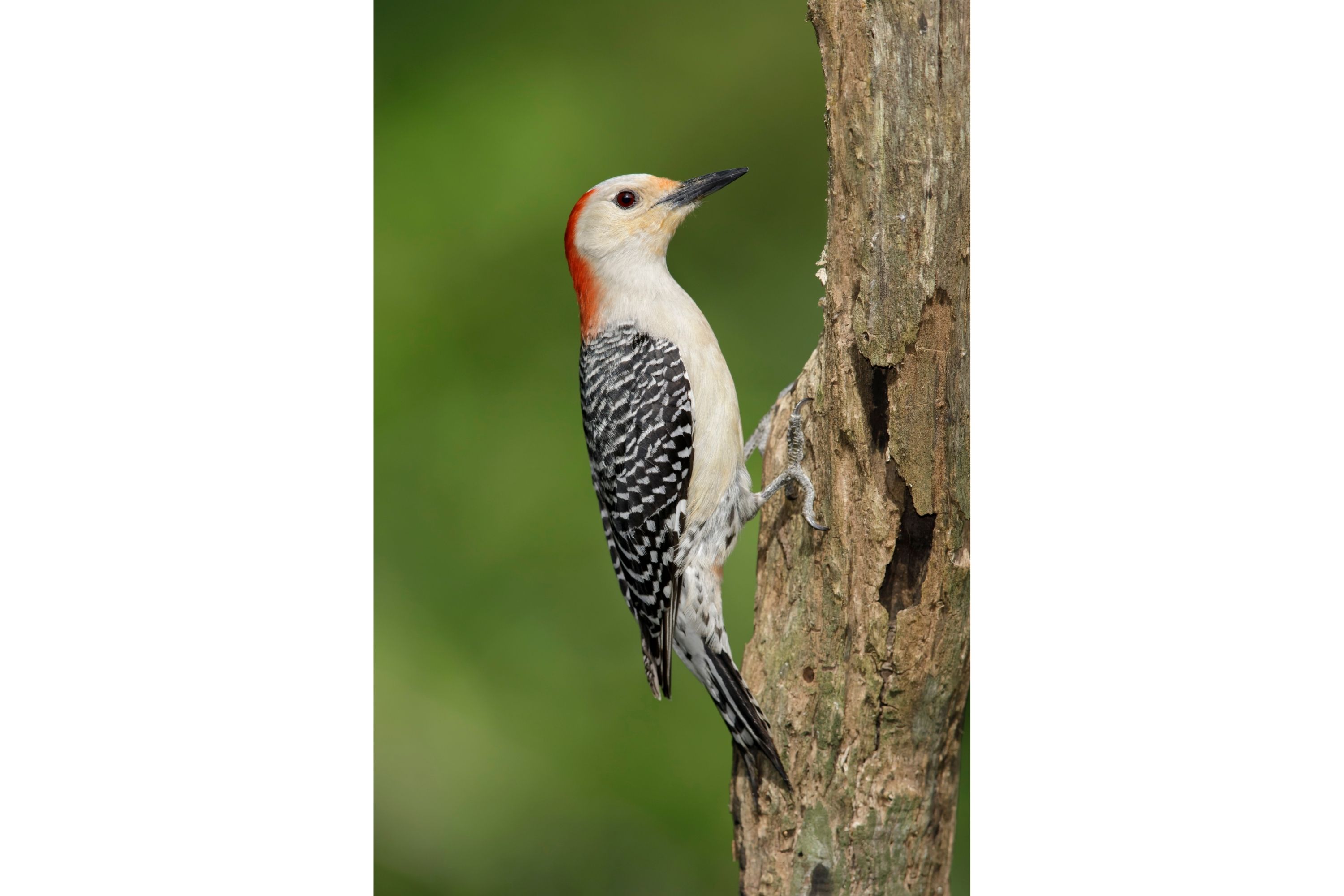Red-bellied woodpecker
(Melanerpes carolinus)

Description
Melanerpes carolinus, commonly known as the Red-bellied Woodpecker, is a medium-sized woodpecker that is native to North America. It is one of the most common woodpecker species found in eastern North America, and it is easily identifiable by its striking red cap and red belly. Taxonomy and Classification The Red-bellied Woodpecker belongs to the family Picidae, which includes over 200 species of woodpeckers, piculets, and wrynecks. Its scientific name, Melanerpes carolinus, is derived from the Greek words melan (black) and erpes (creeper), referring to the bird's black and white striped back, and its habit of clinging to tree trunks. Physical Description The Red-bellied Woodpecker is a medium-sized woodpecker, measuring approximately 9 to 10 inches in length, with a wingspan of 15 to 18 inches. It has a black and white striped back, with a distinctive red cap and nape, and a red belly. Its wings are black with white spotting, and it has a white rump and tail feathers. Males and females look similar, with the male having a slightly longer bill. Juvenile birds have a similar color pattern to adults, but with a grayish-brown cap instead of red, and a pale belly. Range and Habitat The Red-bellied Woodpecker is found throughout the eastern United States, from southern Canada to northern Florida, and as far west as Texas. It is a year-round resident in its range, and can be found in a variety of habitats, including deciduous forests, wooded suburbs, and parks. Behavior and Diet Red-bellied Woodpeckers are primarily insectivorous, feeding on a variety of insects, including beetles, ants, and caterpillars. They will also feed on fruits and nuts, especially during the winter when insects are scarce. Like other woodpeckers, the Red-bellied Woodpecker uses its strong bill to drill holes in trees in search of food, and to excavate nest cavities. It will also use its bill to drum on trees as a form of communication and to establish its territory. Breeding The Red-bellied Woodpecker breeds from March to June. The male excavates a nest cavity in a tree, and both parents take turns incubating the 2 to 6 eggs. The incubation period lasts around 12 days, and the young are born blind and naked. Both parents feed the chicks a diet of insects and regurgitated food. The young fledge after about 28 days and are dependent on their parents for a few weeks after leaving the nest. Red-bellied Woodpeckers typically only produce one brood per year. Conservation Status The Red-bellied Woodpecker is not considered a threatened species, and is listed as a species of "Least Concern" by the International Union for Conservation of Nature (IUCN). However, like many bird species, it is threatened by habitat loss and fragmentation, especially in suburban and urban areas where trees are often removed or trimmed. Conclusion The Red-bellied Woodpecker is a common and charismatic bird species found throughout eastern North America. Its striking red cap and belly make it easily identifiable, and its strong bill and excavating abilities make it an important member of its ecosystem. While not currently threatened, conservation efforts are needed to protect its habitat and ensure its continued survival.
Taxonomic tree:







